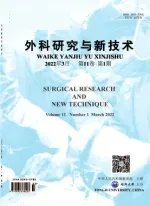Follow-up and surveillance of immunosuppressive treatment in intestinal transplantation
2011-08-15WangKaiResInstGenerSurgClinSchoolMedColNanjingUnivNanjing210002ChinOrganTransplant2011
Wang Kai(王 凯,Res Inst Gener Surg,Clin School Med Col Nanjing Univ,Nanjing 210002)…∥Chin J Organ Trans-plant.-2011,3(5)8 ~8
Follow-up and surveillance of immunosuppressive treatment in intestinal transplantation
Wang Kai(王 凯,Res Inst Gener Surg,Clin School Med Col Nanjing Univ,Nanjing 210002)…∥Chin J Organ Trans-plant.-2011,3(5)8 ~8
ObjectiveTo evaluate the efficiency of monitoring parameters and methods of immunosuppresive treatment in intestinal transplantation and to provide scientific evidence for establishment of Intestinal Transplant Registry.MethodsThe data of 15 patients receiving intestinal transplantation between 1994 and 2009 were analyzed retrospectively for one year.The patients were fallen into 3 eras(1994-1995,2003-2006,2007-2009)according to different immunosuppresive strategies.The perioperative status and one-year survival rate were followed up.The monitoring frequency of implications of intestinal transplantation,such as rejection,infection,toxic and side effects,was evaluated.The monitoring parameters were examined in the proportion of lymphocytes,concentration of tacrolimus,and function of liver and kidney during a follow - up period of one year.Results
During 1994-1995 and 2003-2006,the survival time of grafts was under one year.During 2007 -2009,the 6-month and one-year survival rate in 5 patients(grafts)was 100%and 83.33%,respectively;The increased frequency of rejection occurred during 7 to 12 months after operation;The closure of abdominal stoma was postponed from postoperative six months to one year;Asymptomatic mild rejection after operation was examined(10/13,76.92%).ConclusionDuring one year postoperation,monitoring methods,parameters and frequency for immunosuppressive treatment in intestinal transplantation are rational,and may monitor disease conditions of patients.17 refs,2figs,1 tab
(Authors)
杂志排行
外科研究与新技术的其它文章
- Length of warm ischemic tolerance for epithelial regeneration in heterotopic rat tracheal isog-rafts
- Expression of bradykinin as a substrate of CD26/DPP IV in rats ischemia/reperfusion injury following lung transplantation
- Apoptosis and oxidative injury of donor islets during isolatio
- Efficacy of rituximab-containing regimens on post-transplantation lymphoproliferative disorder following haploidentical hematopoietic stem cell trans-plantatio: reor f 3 css
- Ailogeneic hematopoietic cell transplantation for malignant hematological diseases in patients older than 50 yers of g
- Clinical analysis of 100 cases of lung transplantation for end-stage palmonary disease
